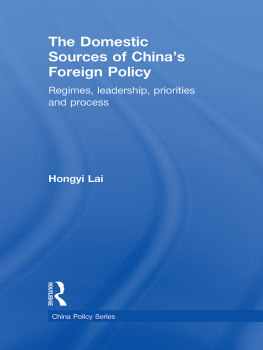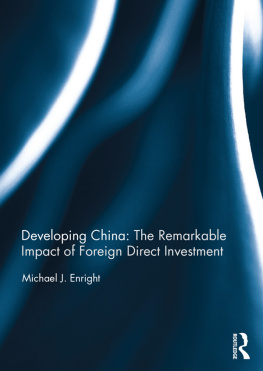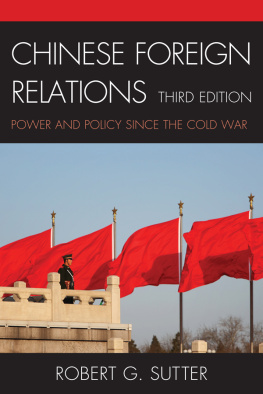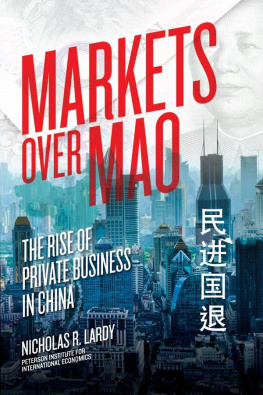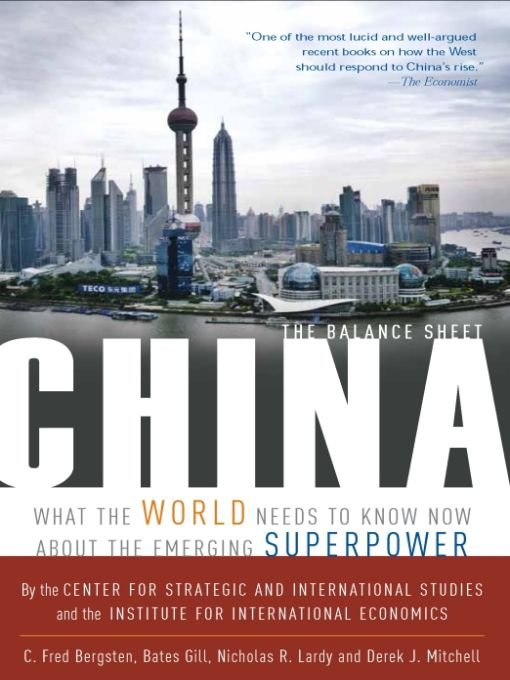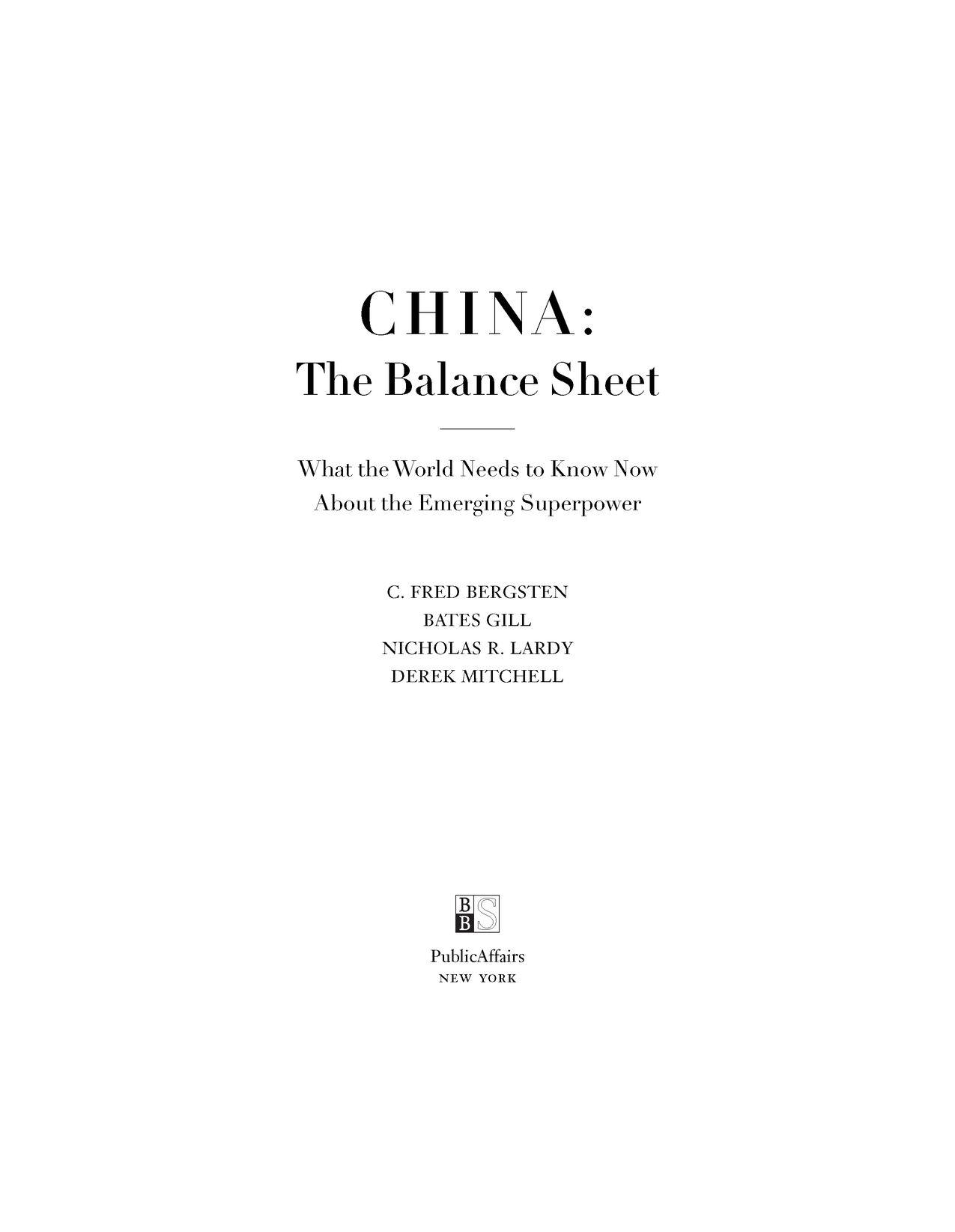Table of Contents
Table of Figures
List of Tables
Preface
Chinas rise as a global economic and political power is one of the transformative events of our time, and one of the most important challenges facing U.S. foreign and economic policy now and for many years to come. It is critical for the United States, and the world as a whole, to have a clear understanding of the China challenge and a sound analysis of its likely evolution and impact. This is particularly true since Chinas rise presents a complex mix of potential opportunities and risks, and of strengths and vulnerabilitiesfactors which, if correctly assessed, can be managed in ways that protect and promote U.S. interests, but which, if misunderstood or misinterpreted, could lead America in harmful strategic directions.
Yet untangling the strands of contemporary China is no easy proposition. China is an exceedingly complex, and sometimes internally contradictory, society that is difficult for outsiders to decipher. Indeed, there is no single China any more than there is a single United States of America; sharply different views exist within that country on most topics as the leadership struggles with immense challenges both at home and as an emerging power on the world scene. Hence it is unusually complicated to discern where China is headed over time on even the most fundamental economic and security issues. At the same time, the unpredictability of developments in the United States and other countriesand of their attitudes toward Chinafurther complicates attempts to assess the impact Chinas course will have on its relations with the rest of the world.
Many efforts to develop a comprehensive and balanced perspective on China are unfortunately clouded, and even distorted, by the lenses through which various observers interpret what they see. It is natural that most multinational companies will emphasize the positive business opportunities offered by China while most American labor unions will focus on the risk of losing jobs to Chinese workers. Some devotees of realpolitik will fear that Chinas size and growing military capabilities will produce a new strategic threat to the United States and its allies while other observers see a strong and more self-confident China as a likely force for stability in the region and the world. Some analysts of Chinas evolution since its reforms in 1978 emphasize the significant improvement in living standards and way of life for much of the population while others stress continued governmental oppression of basic human rights and authoritarian political control.
In an effort to provide a basis for sound and sensible judgments concerning China, the Center for Strategic and International Studies and the Peter G. Peterson Institute for International Economics have undertaken a three-year China Balance Sheet Project, of which this book is the initial product. Because we believe that constructive U.S. policies toward China must rest, first and foremost, on a firm factual and analytical footing, this studys primary purpose is to provide comprehensive, balanced, and accurate information on all key aspects of Chinas own development and its implications for other nations. In an era when policy makers and the public alike are flooded with bits and pieces of information about China, we hope this book will provide one stop shopping for readers who want to grasp, in a single place, both the basics and the complexities concerning this dynamic country and its relationship with the world.
CSIS and the Institute undertook this project in tandem because we concluded that in order to present a comprehensive, holistic view of China, it was essential to consider the key economic, political, and security issues together, and indeed, to link them throughout. Dr. Nicholas Lardy, senior fellow at the Peter G. Peterson Institute for International Economics, took primary responsibility for Chapter 2, on Chinas domestic economy, and Chapter 4 on China in the world economy. Dr. Bates Gill, holder of the Freeman Chair in China Studies at CSIS, took primary responsibility for Chapter 3 on Chinas domestic transformation. Derek Mitchell, senior fellow in the International Security Program at CSIS, authored Chapter 5 on Chinas foreign and security policy. Dr. Gill and Dr. C. Fred Bergsten, director of the Peter G. Peterson Institute for International Economics, jointly authored the summary and overview in Chapter 1 and the concluding Chapter 6, which integrate the various topics, with substantial input from Dr. Lardy and Mr. Mitchell. All these authors have published extensively on their areas of expertise, as described in their biographical notes.
Carola McGiffert, fellow in the International Security Program at CSIS, served as executive director of the China Balance Sheet Project, and, with Dr. J. Bradford Jensen, deputy director of the Institute, led our administrative support team. Invaluable research assistance was provided by Chietigj Bajpaee, Melissa Murphy, and Xiaoqing Lu at CSIS and Giwon Jeong at the Institute.
We have been enormously assisted in the preparation of the book by an Advisory Committee of high-level experts on China and U.S.-China relations. The full committee has met with us on two occasions, at the outset of the project and to review a penultimate draft of the entire manuscript. Some of its members have also met separately with the authors of individual chapters for more in-depth consultation on particular sets of issues. We deeply appreciate the very important contributions of this group and look forward to working closely with them as the overall project continues. Our gratitude extends particularly to Ben W. Heineman, Jr., senior fellow at the Belfer Center for Science and International Affairs at Harvard Universitys John F. Kennedy School of Government, member of the CSIS Board of Trustees, and former senior vice president-general counsel of GE, who conceived of the project and helped it to reach this stage.
The findings and opinions in this book, however, rest with the four authors. They do not necessarily represent the views of our Advisory Committee members, contributing authors, and others who have provided support. A full list of Advisory Committee members, contributing authors, and other supporting individuals is at the end of this volume.
Over the next three years, we will continue to work together to bring thorough, objective information about China to light in an effort to help guide and frame a national discussion on Chinas rise and its significance. Follow-up activities will include conferences, around the country as well as in Washington, to discuss the findings of this book and the China challenge more broadly, and especially to develop further the policy implications of our analyses. We will also release more extensive papers on some of the issues addressed in the book, such as Chinas treatment of intellectual property rights and its agricultural policies, as well as conduct additional analyses of some of the most urgent and unsettled topics, such as the North Korea nuclear problem and Chinas currency policy. We plan to update, revise, and re-release the present volume in 2008 in an effort to maintain its accuracy and relevance. Our two institutions will also post a dedicated websitewww.chinabalancesheet.orgto provide more extensive facts, figures, information, and analysis on China and U.S.-China relations.



